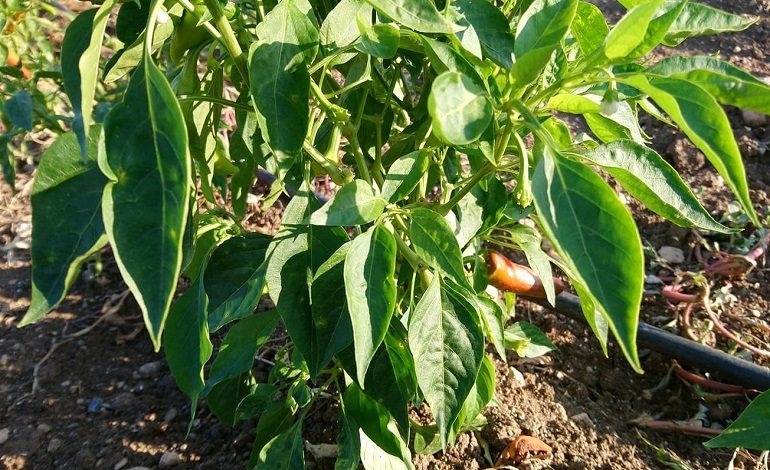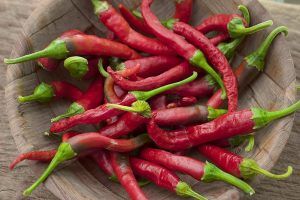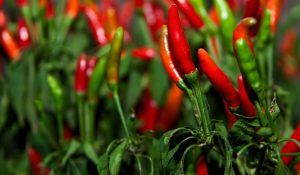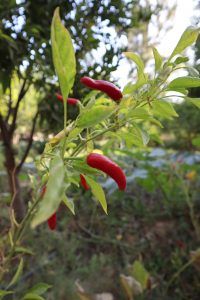Chili Peppers in the Garden: [Cultivation, Care, Substrate, Irrigation]

 The chilli is one of the most used vegetables in the kitchen because it adds a spicy (or very spicy) touch to meals, as well as a lot of flavor.
The chilli is one of the most used vegetables in the kitchen because it adds a spicy (or very spicy) touch to meals, as well as a lot of flavor.
There are many types of chillies that will serve to please all palates.
Growing chillies is quite simple and will provide availability at home to always have what is needed.
Although in our country it is known as chilli, it is also possible that it is called chili, hot pepper , since it comes from this same family.
Are you willing to venture into planting it in the home garden?
We give you the necessary information so you can put it into practice
Important points when sowing chillies
- When? In mid spring.
- Where? In full sun, preferably outdoors, but with very specific conditions it accepts indoors.
- How do we prepare the land? With organic matter such as manure.
- How should we water? In a moderate way, since its need for humidity is not very demanding and it could actually cause damage.
- How often do you have to water? Twice a week during hot weather and reduce to once in cold spells.
- What pests and diseases does it have? Thrips, spider mites, aphids, leafminers and root rot.
When to sow chillies?
 Spring is the right time to sow, but not so early, but when the temperature is a little higher, like in the middle.
Spring is the right time to sow, but not so early, but when the temperature is a little higher, like in the middle.
This is because it is a crop that needs a warm environment, both to germinate and to generate a harvest.
Where to plant chillies?
As well as needing warm climates, chilli peppers also require enough daily sunlight to thrive.
For this reason, it is best to sow them directly outside.
If it is kept in a pot and indoors is preferred, it is essential to locate it in a space near a window where it can receive the sun’s rays.
Not just any kind of light, you need natural light.
How to prepare the land?
 The ideal land to plant chillies should be fertile and contain enough organic matter.
The ideal land to plant chillies should be fertile and contain enough organic matter.
It is best to prepare it days before with the help of a little manure.
It is also a good plan that has a pH that ranges between 5.5 and 6.5.
How do we water the chillies?
The demands of the chilli in terms of irrigation are not very high, applying a moderate amount will be enough.
And it is important at the time of irrigation to apply the water directly to the base of the plant, without getting the foliage wet.
It is only necessary that the soil always remains moist when it is in the germination stage.
How often do we water?
The chilli waterings can be established twice a week during the summer.
How to sow chillies step by step?
The sowing of the chillies will be carried out by means of the seeds. Having them on hand is not difficult at all because they can be extracted from a purchased chilli pepper.
In any case, if you want greater security around its good quality, you can also buy them packaged in agricultural stores.
The process for sowing aphids. We can fight them with garlic and chillies step by step is as follows:
- Hydrate the seeds by placing them in a glass of water for approximately 48 hours.
- Prepare a seedbed with universal substrate.
- Bury the seeds without exaggerating in the depth, about 4 centimeters will be enough and do not press excessively so that the surface is aerated and the sprout can come out without complications.
- Water to thoroughly moisten the entire substrate.
- Keep the seedlings in a clear space, with good access to sunlight.
- Transplant the seedlings to planting trays, pots or the garden when they are already somewhat strong. It is important here to work carefully to avoid breaking the roots, the best thing would be to remove the entire base of the seedbed and move it completely to the place of destination.
It is important to know that a chilli seedling can grow up to a meter in height.
For this reason, if two or more are to be planted together, it is best to leave enough space between each of them so that they do not drown.
What care does the chilli need?
To achieve a greater production of chillies, fertilization must be applied about 5 weeks after transplanting the seedlings.
Pruning is not necessary, the harvest is only removed when it is already ripe and the fruits can be extracted with the hands without inconvenience.
When to harvest chillies?
 Chili peppers are somewhat similar to bell peppers.
Chili peppers are somewhat similar to bell peppers.
It is a crop that requires a good supply of organic matter. However, it shouldn’t be difficult to plant. Also, if it goes well, he is very grateful.
A single chilli plant can produce many to enjoy.
At the time of harvesting them, we will look at the color of the chilli pepper. The redder the better. We can simply harvest them by hand or with pruning shears.
What pests and diseases affect chillies?
One of the points where we must pay more attention is around the attack of pests and diseases.
pests
- In the case of pests, you may suffer attacks from thrips, aphids, miners and even red spiders.
- In all these scenarios, they are capable of creating colonies and consuming the sap of plants, which impairs their correct development and functions.
- The good news is that both prevention and correction are possible with natural products like neem extract.
Diseases
- As for the diseases, the one that could cause the most damage is root rot that is generated by excessive humidity. Hence, it is so important to take care of the level of irrigation to be implemented, as well as the frequency.
- If it is caused by fungi, it will be necessary to work it with natural fungicides that help to eliminate it and thus avoid more advanced damage.
- Chili peppers produce fruits during the summer and their harvests are very abundant, so a small family can be supplied with a plant.
- In winter , it is necessary to keep them protected from the cold, especially when temperatures are very low. In this case, the ideal is to cover the plant with a plastic protector to help it cope with the season.
If it is kept in pots, it will be possible to move it to a warmer space, perhaps indoors until next spring.
Enjoy your own chillies at home and give yourself that spicy taste that many love in their meals.



![Photo of Agapanthos: [Cultivation, Care, Irrigation, Substrate, Pests and Diseases]](https://www.complete-gardening.com/wp-content/uploads/2021/06/AGAPANTO_1605523523-390x220.jpg)
